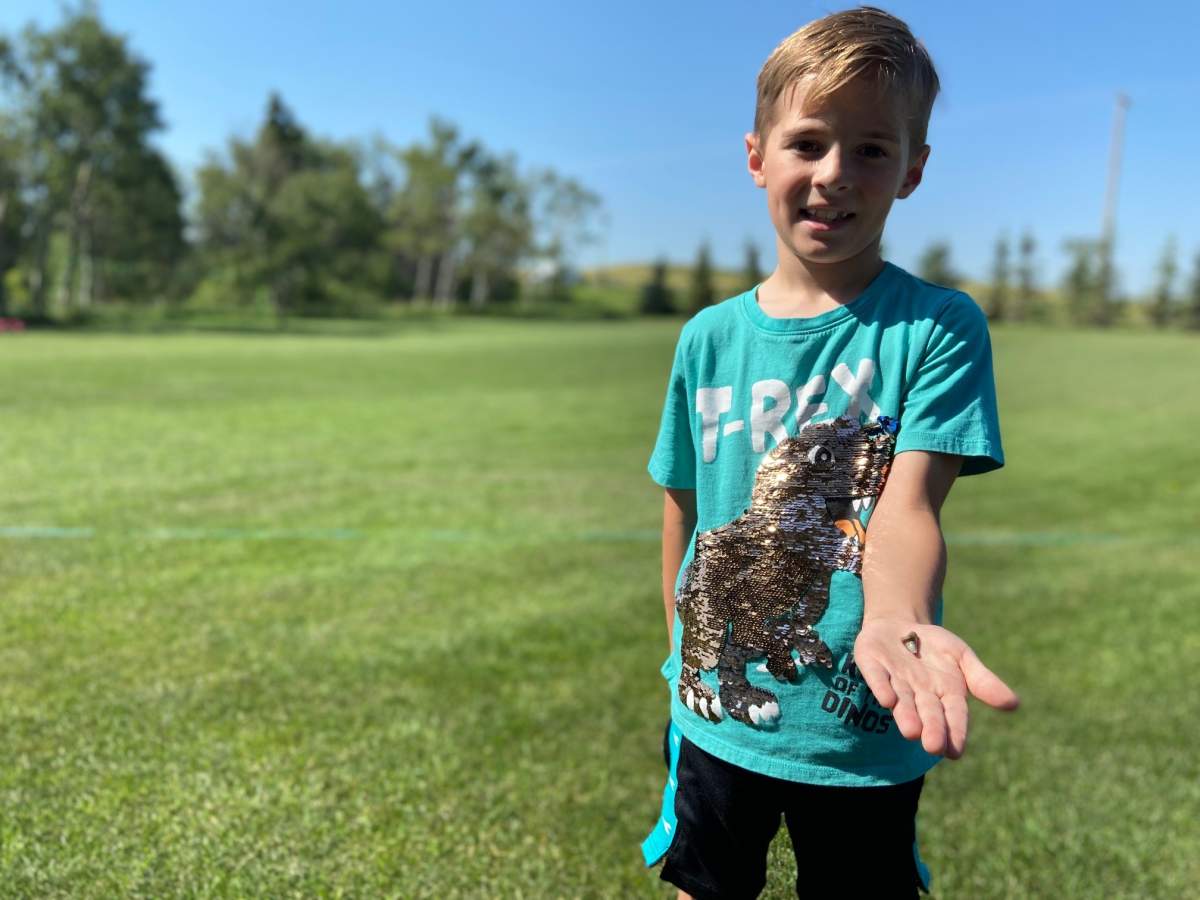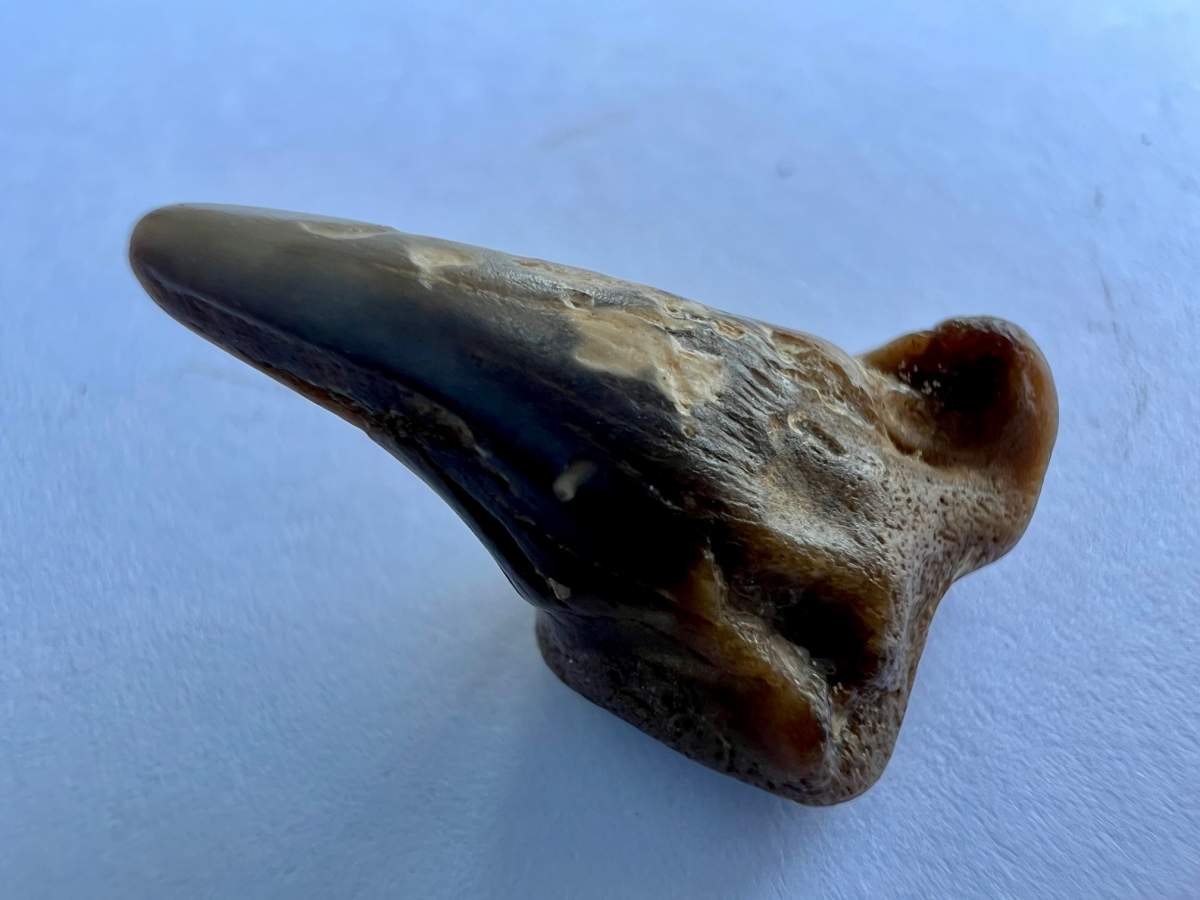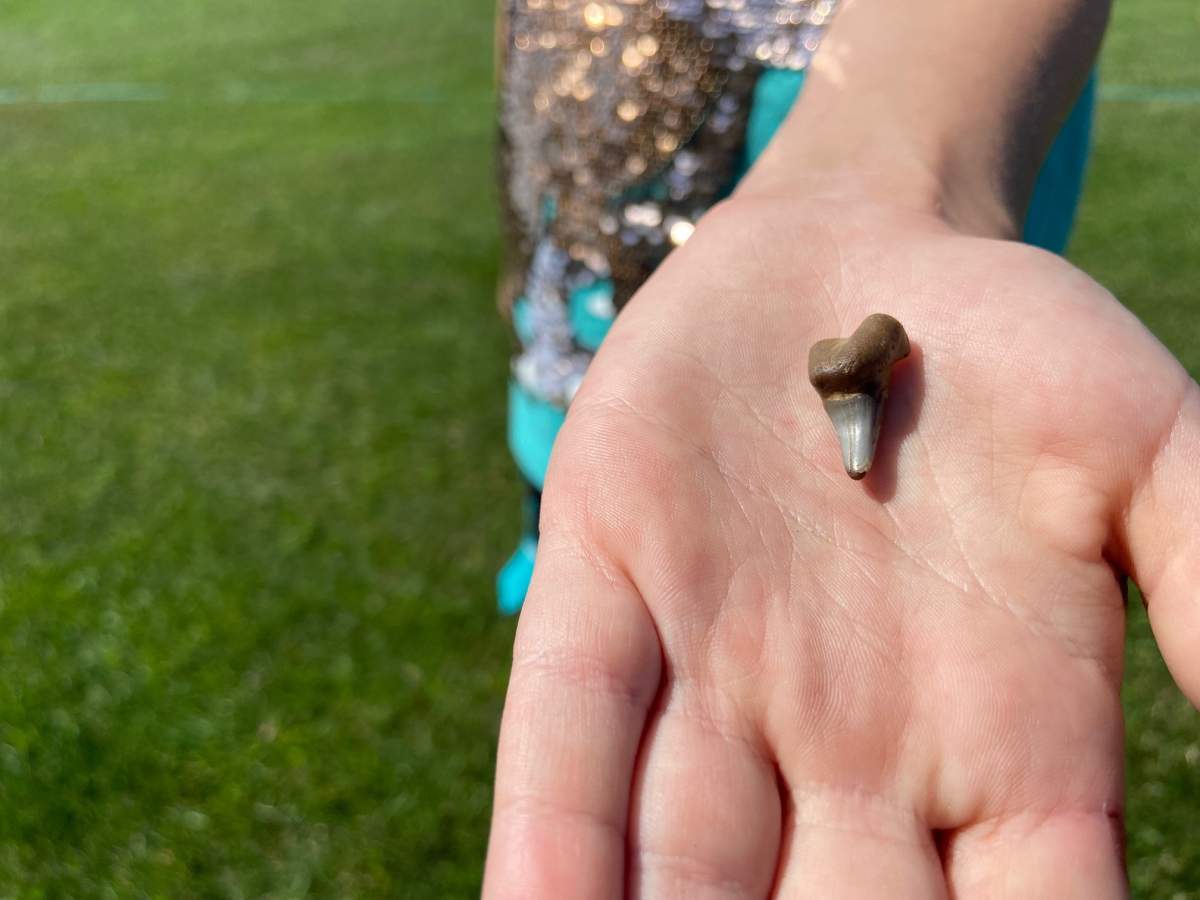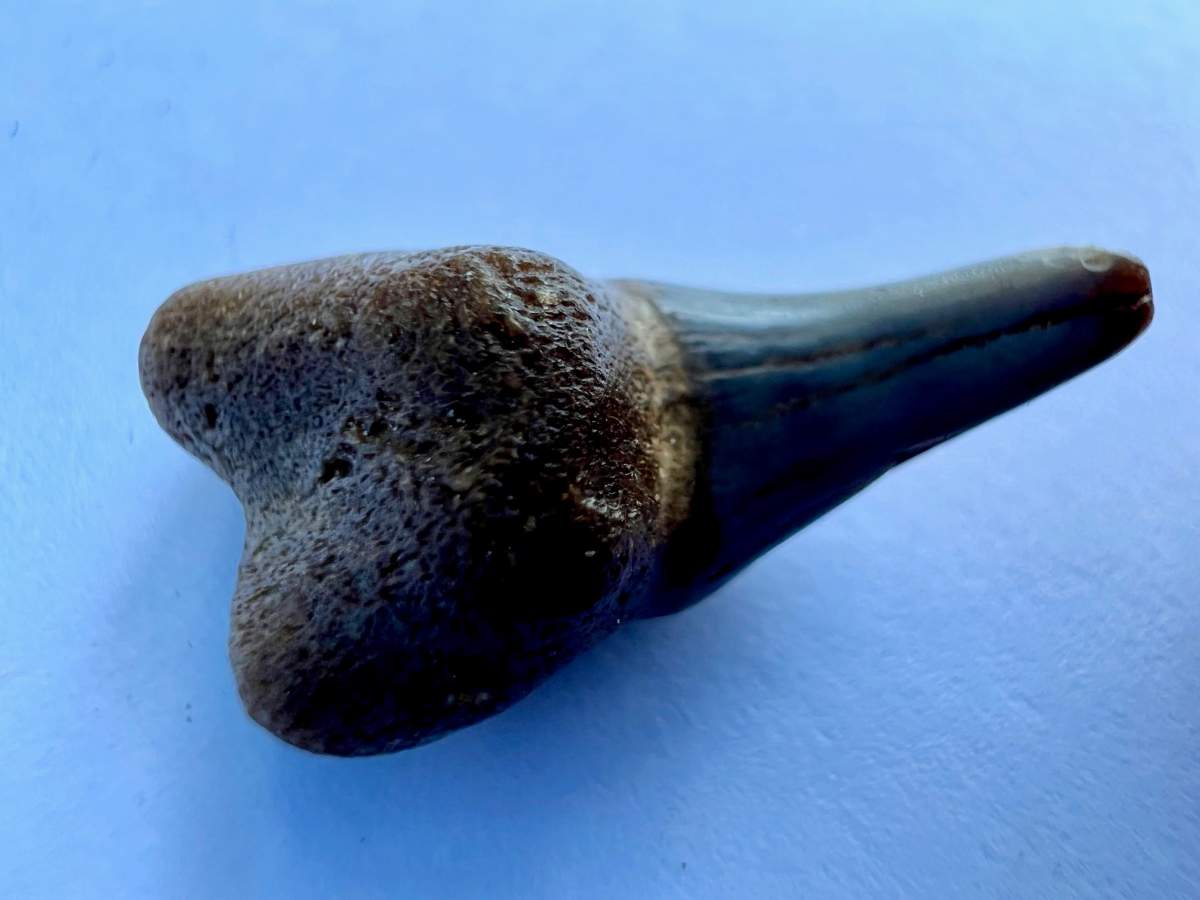Max Maurizio and his little brother were digging in dirt, as young boys are wont to do, when he discovered more than just rocks and soil in his family’s central Alberta yard.

“At first we didn’t know what it was, so we were all looking at it,” said mom Carly Maurizio.
Maurizio said Max, who is about to turn eight, found a very old-looking tooth while exploring their property southeast of Red Deer, Alta.
He was looking around the foundation of what used to be an old schoolhouse in Red Deer County when he made the discovery.
“I was digging, looking for meteorites with my brother — and we were also looking for nails — and then I found a tooth and I thought it was a claw,” Max said.
The boys ran inside to show their parents, and the family pondered where it came from. At first they thought it might have been a cat’s tooth, but a closer look made them suspect it was something more special.
“(Max) put it under the microscope that he has to get a better look at it. And he was very excited,” Maurizio said.
Given Alberta is a land-locked province devoid of sharks and oceans, the family sent off some photos to the Royal Tyrrell Museum of Palaeontology in Drumheller to see what the experts had to say.
It turned out to be a fossilized tooth from an extinct shark that lived around 60 million years ago.
“We were confused as to where it could have come from,” Maurizio said.
“Never in a million years did we dream that it could have been from a prehistoric animal that’s now extinct — or a marine animal that’s now extinct.”
The family received a message back from Royal Tyrrell head technician Joseph Sanchez, who said he consulted with Dr. Don Brinkman, an expert on fossil fish and turtles, who noted the following:
“The tooth looks to me to be from the genus Scapanorhynchus (a type of shark). The main features that point to this are the presence of a single cusp and the striations on the medial surface. Most other sharks have small cusps on at least one side of the main central cusp. Scapanorhynchus is fully marine, so it is a little unusual getting it in the Red Deer area. However, I have seen a tooth of this genus from exposures of the Horseshoe Canyon Formation in the Tolman Bridge area.”
Maurizio noted the Tolman Bridge isn’t too far from their home. The Royal Tyrrell said a living relative of Scapanorhynchus is the deep sea goblin shark.
During the Cretaceous period between 145 and 65 million years ago, much of Alberta was covered by a shallow ocean: the Western Interior Seaway split North America into two.
The sea ran north-south through Alberta and Saskatchewan, connecting what is now the Gulf of Mexico to the Arctic Ocean.
The two halves of North America – Laramidia in the west and Appalachia in the east – remained apart for millions of years, only coming back together around 60 million years ago.
Sanchez said the tooth is an interesting find, adding the rocks in the Red Deer area are from the Paskapoo Formation, which is about 60 million years old and underlies much of southwestern Alberta.
Dan Spivak is head of resource management at the Royal Tyrrell Museum and said discoveries are made all across Alberta.

Get daily National news
He said the badlands are known for fossil discovery because “Mother Nature has made a big cut through the Prairie,” but added ancient bones and teeth can be found anywhere where the earth is being exposed.

“We get reports from all over the province, whether it’s Fort McMurray, Grande Prairie area, Grande Cache all the way down to Edmonton and Calgary, Red Deer, Lethbridge. I mean, I could go on and on.
“Almost anywhere you are, there’s a chance you could potentially find a fossil.”
Fossil collecting has been a pastime and hobby in Alberta for generations and Spivak said it’s always fun to see members of the public make important discoveries.
Sometimes something that appears to be small and insignificant can actually be quite scientifically important.
While there are palaeontologists at universities and museums across Alberta, Spivak said they don’t have the bodies to get out and see every part of the province, so they rely a great deal on the public to report discoveries.
“I always joke we don’t have a SWAT team that we send out to people’s houses when they find fossils.”
While fossils found on the surface of the earth — such as in a field — are generally fair game, Spivak said people are not supposed to dig specifically for them.
If a homeowner or business thinks they have found a fossil while digging a basement or dugout, they’re advised to stop their work, take photos and record where the fossil was, and give the museum a call or email.
“We try to work with people in a cooperative manner, that if they find something that is important, we try to encourage them to deposit it at the museum.”
Maurizio said Max is very adventurous and curious, and for years has been hunting for fossils, space rocks and bones both at home and away.
“We go to Drumheller every single year and take multiple hikes in that area – always on the hunt for dinosaur bones,” she said.
“To find this in our own yard is pretty remarkable. Max is just so excited.”
The museum noted the identification is preliminary based off the images provided by the family and can’t be guaranteed without an in-person examination.
The family plans to take the tooth to the museum to be confirmed during their annual trip to Drumheller next spring, but Max hopes to keep it afterwards.
“So I can probably build the whole skeleton of a shark — and then maybe I’ll give it back, if I don’t have room downstairs. But if I do, I might keep it,” Max said, adding he would love to discover entire skeletons.
Mom said this is the beginning what Max hopes is a lifelong passion for all things prehistoric.
“He would like to keep it as part of the beginning of his potentially career in palaeontology — as I’m told, that’s what he wants to pursue,” mom said, although Max contended he would also love to spend his life “discovering meteorites because I really like meteorites also.”
Ever since finding the tooth, his mom says Max has been outside day and night searching for more fossils and old things.
“He’s out here looking through rocks and stones and grass and dirt and just anything he can get his hands on.”
“I like dinosaurs because they’re big and because they’re really rare to find,” Max added. “They’re extinct now so nobody can say hi to them — they can only say hi to their skeleton.”












Comments